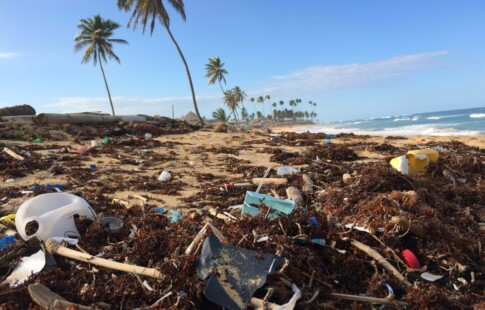
What Are Green Loans and Can Your Business Get One?
We are reader-supported. When you buy through links on our site, we may earn affiliate commission.
Green loans are increasingly popular and available to businesses looking to further their sustainability contributions to society. Knowing how to tap into this funding opportunity can be a game-changer for your enterprise as the environmental, social and governance (ESG) mandate gains traction.
What Is the Green Loan?
Green loans, also known as sustainable or eco loans, represent a specialized form of financing designed to fund environmentally friendly projects. Government and eco-focused financial institutions provide this facility to qualified borrowers.
The concept emerged in response to the growing need for businesses to adopt sustainable practices and reduce their carbon footprint. Since then, it has blossomed into a comprehensive framework for financing initiatives that promote renewable energy adoption, waste reduction and other sustainable practices.
One of the earliest forms of eco-finance was the issuance of green bonds — fixed loans made to borrowers — by the European Investment Bank in 2007. The World Bank issued its version the following year. Green bond allocation has grown steadily, reaching $575 billion in 2023 with a 10% year-on-year growth.
What Are the Benefits of Green Loans?
As businesses increasingly prioritize environmental responsibility, eco loans empower them to invest in projects that benefit both the planet and their bottom line. This option presents a range of benefits that extend beyond mere financial assistance.
1. Lower Interest Rates
Many governments and financial institutions offer competitive interest on green financing to promote sustainable practices. Recent comparison data indicates that, on average, these facilities are up to 2.48% lower than conventional loans, reducing overall borrowing costs.
2. Environmental Impact Reduction
Green loans specifically finance projects that reduce carbon emissions, enhance energy efficiency and promote sustainable resource management. This approach helps your business combat climate change better and contribute to global sustainability goals.
3. Brand Differentiation
PwC research shows today’s consumers are willing to pay nearly 10% more for sustainably produced or sourced goods despite the soaring cost of living. Engaging in green financing can position your business as environmentally responsible, appealing to customers who prioritize sustainability in their purchasing decisions. A commitment to ESG can also help your enterprise attract eco-conscious investors and enhance relationships with key stakeholders.
4. Regulatory Compliance
Many regions are implementing stricter environmental regulations. Financing sustainability projects can help your business stay ahead of compliance requirements, reducing the risk of fines and penalties.
5. Access to New Markets and Opportunities
Green loans can facilitate the development of innovative products and services that cater to the growing demand for sustainable solutions. Historical data shows businesses that financed ESG product lines saw 8% more cumulative growth over five years than their non-ESG counterparts. Engaging in sustainable practices can also open doors for partnerships with other organizations, leading to collaborative projects and shared resources.
6. Operational Savings
Taking out an eco loan to finance energy efficiency projects, such as upgrading HVAC systems or improving insulation, can lead to substantial long-term savings over time. These upgrades can also help your business mitigate the impact of rising energy prices, achieving more stable and predictable operating costs.
Can Your Business Get a Green Loan?
As long as your company meets the eligibility criteria for an eco loan, you should be able to obtain one. Let’s explore what you need to know.
The Four Green Loan Principles (GLPs)
First things first, we must establish what constitutes a green loan by ensuring the funding product adheres to the four core GLPs.
- Proceeds Use: The funds from your green loan must be used exclusively for projects with positive environmental impacts. Outline these benefits clearly and ensure they are quantifiable and measurable.
- Project Evaluation and Selection Process: Document an internal method for reviewing and choosing projects for green loan financing. This process should incorporate your business’s sustainability objectives and how the project aligns with established environmental goals.
- Management of Proceeds: Tack and manage the loan amount transparently, such as crediting the funds to a separate account. You must also maintain detailed records demonstrating the funds’ use for the intended green projects and prepare for ongoing updates to your lender.
- Reporting: Provide regular, readily available, up-to-date information on the performance and environmental impact of your funded projects. This includes metrics such as energy savings, emissions reductions and other relevant indicators. Transparent reporting builds trust.
How to Apply for an Eco Loan
Like any other financing application, being well prepared and having all the required information ready are the keys to success in this endeavor. Follow these steps to increase your chances of securing financing for your environmentally sustainable projects.
Step 1: Identify Your Green Project
Define the green project you intend to finance with the loan. Whether it’s installing a solar panel array, cleaning up a polluted area or implementing waste reduction practices — the important thing is to clearly demonstrate the environmental benefits.
Step 2: Research and Choose a Lender
Research financial institutions and government organizations that offer green loans suited to your project. For instance, JPMorgan Chase recently released its financing ratio of $1.29 for every $1 backing carbon-intensive energy supply. That would make them a viable lender if you’re seeking a green loan for energy development.
Step 3: Prepare a Detailed Project Proposal
A well-prepared project proposal is crucial for your application. It should include:
- Description: Provide a comprehensive overview of the project, objectives, and expected environmental benefits.
- Technical specifications: Outline the project’s technical details, including equipment, materials and construction methods.
- Timeline and budget: Present a realistic timeline for project completion and a detailed budget breakdown.
- Environmental impact assessment: Demonstrate the project’s positive environmental impact, including metrics such as emissions reductions, energy savings or water conservation.
- Financial projections: Include detailed numbers demonstrating the project’s viability and ability to generate returns.
Step 4: Gather Supporting Documentation
Lenders will want to see relevant documentation to support your application, including:
- Financial statements: Compile recent financial statements — balance sheets, income statements, cash flow statements — to demonstrate your company’s fiscal stability.
- Sustainability policy: Provide evidence of your commitment to sustainability. This could involve a documented policy, past achievements in environmental initiatives or membership in recognized green organizations.
- Regulatory compliance: Provide proof of compliance with relevant environmental regulations, including permits, licenses and certifications.
- Credit history: Share information about your business’s credit history and current debt obligations for creditworthiness assessment.
Step 5: Submit Your Application
Once you have gathered all the required information, submit your application to your chosen lender. Be sure to follow the lender’s specific application procedures and deadlines.
Step 6: Follow Up and Monitor
Follow up with the lender to inquire about the status of your application and provide any additional information they may require. Once approved, monitor the loan’s progress and ensure the funds are used exclusively for the intended green project.
Embrace Green Loans for a Sustainable Future
If used correctly, green loans can make a big difference in your business and the environment. While they’re a for-profit instrument, their potential impact on the planet’s well-being makes them a worthy consideration. So take advantage of them to make your business operations more eco-friendly today.
Share on
Like what you read? Join other Environment.co readers!
Get the latest updates on our planet by subscribing to the Environment.co newsletter!
About the author

Steve Russell
Steve is the Managing Editor of Environment.co and regularly contributes articles related to wildlife, biodiversity, and recycling. His passions include wildlife photography and bird watching.





